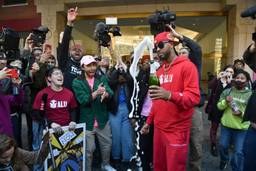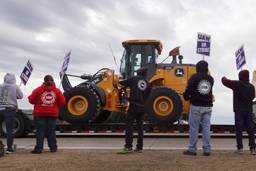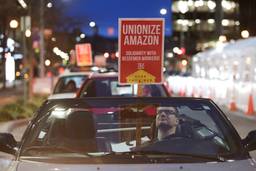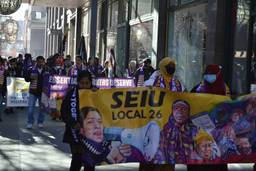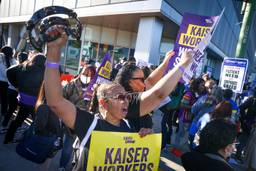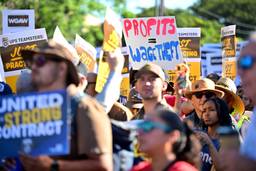Friedrichs Is Dead; Labor’s Crisis Is Not. The ‘Scalia Dividend’ Is a Rare Opportunity for Unions.
Shaun Richman
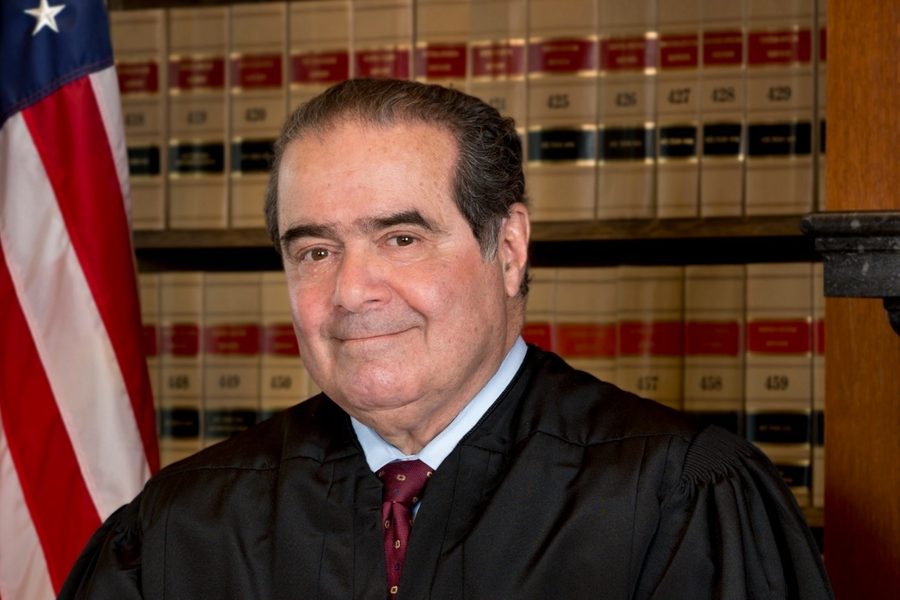
The Friedrichs vs. CTA Supreme Court case, a nakedly partisan assassination attempt on the labor movement, has died with Justice Antonin Scalia. What cannot die with it is the sense of existential crisis within the labor movement. We need a far-reaching conversation about the pathway back to increased activism, membership and power.
Like few moments before it, the Friedrichs case sparked a broad consensus within labor that our movement faced an existential crisis and that business as usual was a prescription for assisted suicide. Unfortunately, too many union leaders and staff based out of Washington, D.C. are now at risk of being dismissed as a bunch of Chicken Littles who overhyped a sky that never fell by the people who have the greatest ability to determine labor’s future: the local leaders and disengaged members.
It was a mistake to use the Friedrichs case to forge this somewhat rare agreement that labor faces an acute crisis. It seemed like a long shot that the Supremes would even take up the case just a few months after rejecting Justice Alito’s wet dream of a public sector “Right to Work” standard by a 5-4 margin in last session’s Harris vs. Quinn case (I lost a lot of bar bets when they did). Even with the case proceeding to oral arguments, there was always the possibility that the Court would punt on the issue or even rule in favor of the unions for political reasons or that one of these old farts would die and the case would deadlock.
But labor’s crisis predated Friedrichs and will live on after it. The “Right to Work” agenda, and the gutting of public sector collective bargaining laws, will continue to be pressed at the state level. And if the general financial commitment and philosophical approach to new union organizing remains the same, union density will surely continue to decline.
Fortunately, until the Friedrichs case gets re-argued or stalemates in a 4-4 decision, labor remains a bit like Schrödinger’s cat: simultaneously getting murdered by the judiciary and in the midst of a possible resurrection. So there’s still time to harness the sense of crisis into a renewed commitment to radical workplace democracy and activism. And the “rainy day” savings that many unions made in anticipation of an adverse decision can now be used as a “Scalia Dividend” to be invested in new campaigns.
A pragmatic approach to Armageddon
Faced with a potential revenue loss of millions of dollars, international unions focused pragmatically (and conservatively) on cajoling their locals to sign up agency fee payers to full union membership. But that was merely a matter of mechanics — a pragmatic approach to the coming Armageddon. Where workers are exclusively represented by a union and already compelled to pay fees for the benefit of that representation, those that haven’t joined typically haven’t been asked. It is a problem that too many unions don’t make a face-to-face contact to new employees and ask them to join, but it’s hardly labor’s biggest one.
The actual crisis in labor is rooted in a framework that has turned unions into agencies for workers, instead of organizations of workers.
The legal obligation of the duty of fair representation forces unions to focus on grievances and contract bargaining while the Taft-Hartley law and contractual no-strike agreements strongly discourage rank-and-file worker protest. Too many members then develop a “what have you done for me lately?” relationship with their union that is vulnerable to a “give yourself a raise” campaign that deep-pocketed right-wing outfits can launch following the loss of agency fee, encouraging union members to stop paying dues or agency fees and gain a bump in their paycheck.
That is the crisis that has been largely unaddressed, or at least unsolved, even while unions have spent two decades genuinely trying to meet the charge from the AFL-CIO to “organize at an unprecedented pace and scale.”
Not to mention, while union supporters were dancing on Justice Scalia’s grave, the West Virginia legislature just voted to become the 26th so-called “Right-to-Work” state. How long can agency fee survive in the other half of the states?
So the crisis still exists in that declining union density leads to declining union power. The billionaire class still wants to kill us, and we don’t make a compelling case about why workers should risk their jobs and relationships to fight with unions that look like ineffective special interests.
One of the under-told stories of the last two decades is how badly, and often how subtly, the organizing model conflicts with unions’ business as usual. In order to win, organizers introduce a radical and inclusive democracy into workplaces. We recruit often large and unwieldy organizing committees of workplace leaders through whom all major decisions about tactics, timing and demands must go for deliberation and approval.
And then we throw these newly radicalized workers into local unions where leadership all too often feel a political need to control bargaining and messaging themselves, going off into backrooms to meet with management and come back with a “win.” This is an unspoken conflict between international unions — who feel the need to “organize or die” more acutely — and locals who too often receive new bargaining units as an unwelcome disruption.
Many organizers wanted to use Friedrichs as an opportunity to work through this conflict. Instead, panicked about potential revenue loss, the leadership of the international unions talked too much about “agency fee conversion” (shop talk for convincing union-represented non-members to join and pay full dues) and a single Court case that is now moot. The organizers caught in the middle could find themselves locked out of further conversations about labor renewal and change with locals that now feel the crisis has passed. They need to broaden the sense of crisis and bring newfound resources to the table.
The “Scalia Dividend”: Labor’s second chance to get it right
Many unions that had Friedrichs’ sword of Damocles over their heads have quietly been squirreling money away, by under-funding or delaying funding new campaigns and not filling vacant staffing positions. Which means those unions now wake up to a “Scalia Dividend” — an unexpected windfall of newly available financial resources for new campaigns and initiatives.
Unions can and should commit resources to comprehensive campaigns for new bargaining units — the kind of campaigns that have quietly ceased in recent years. These organizing campaigns should have an eye towards enhancing density in union strongholds like auto manufacturing, education and retail, but also for big public campaigns that could potentially inspire more non-union workers to take action.
What could go further in inspiring non-union workers to contemplate their power is to build on the internal organizing that’s been going on in anticipation of Friedrichs with contract campaigns. Meaningful member engagement — the kind that can withstand the loss of agency fee — comes from stoking workers’ desires for better pay and working conditions (even their less “reasonable” demands) and extracting sweat equity from them in the form of escalating actions. These campaigns should culminate in a plan to demonstrate, as Chicago Teachers Union President Karen Lewis has said that, “Our ability to withhold our labor is our power.”
We also need a new attempt at labor law reform. The fact that a workers rights bill has less of a chance passing Congress than Obama’s Supreme Court nominee shouldn’t make us say “Why bother?” Instead, it should inspire us to propose big, bold and meaningful reforms. Restoring solidarity rights, rooting unions’ collective actions in the First Amendment, outlawing “Right to Work,” banning permanent replacement of strikers — put it all on the table.
God forbid we do manage to spark the kind of mass strike wave that panics the billionaire class into throwing workers a few bones. What would we win for our effort? Card check? The AFL-CIO should convene an open call for legal reform proposals and put a new “Right To Your Job” bill on the record and on the lips of our members and allies.
The erstwhile House of Labor should also convene a wide-ranging strategic retreat for local leaders, rank-and-filers, staff, academics and activists that treats no idea as unwelcome or unthinkable. The recent petition filed by 106 leading labor scholars in response to a question on union access to mandatory captive audience meetings left open by the NLRB (and promptly forgotten by union organizers) for 50 years highlights how badly labor needs more and different perspectives brought into the conversation. The poor souls who have spent the last few months poring over organizing databases, wall charts and lit pieces in anticipation of the Friedrichs decision need some fresh air and some new people to talk to.
Unions are no longer facing a multi-million dollar hit in June. We can give the bunker mentality a break, but we can’t pretend that we’re in the clear. There aren’t a lot of second chances in life. Labor must not squander this one.

I hope you found this article important. Before you leave, I want to ask you to consider supporting our work with a donation. In These Times needs readers like you to help sustain our mission. We don’t depend on—or want—corporate advertising or deep-pocketed billionaires to fund our journalism. We’re supported by you, the reader, so we can focus on covering the issues that matter most to the progressive movement without fear or compromise.
Our work isn’t hidden behind a paywall because of people like you who support our journalism. We want to keep it that way. If you value the work we do and the movements we cover, please consider donating to In These Times.
Shaun Richman is a labor expert at SUNY Empire State College and author of Tell The Bosses We’re Coming: A New Action Plan for Workers in the 21st Century.

